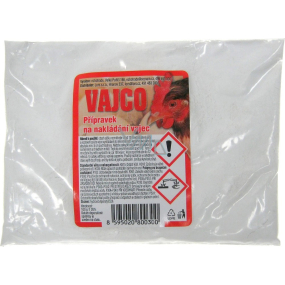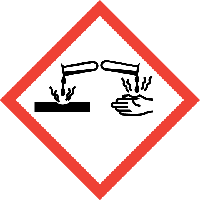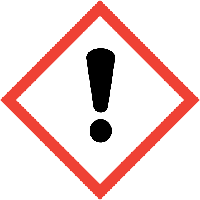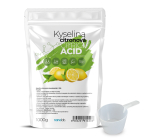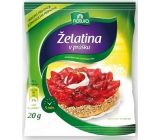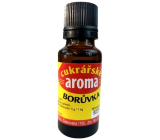Vajco egg pickling preparation 100 g
| Korozivní/žíravé: | Korozivní/žíravé |
| Nebezpečnost pro zdraví: | Nebezpečnost pro zdraví |
Osvědčený osvědčený přípravek našich babiček k nakládání vajec.
Mix the contents of the sachet in approximately 6-10 litres of cold Water and pour the solution over the eggs in a glass or stoneware container so that they are at least 5 cm below the surface. Cover the container with cellophane and store in a dark and cool place. The temperature must not fall below 1°C. This quantity should be sufficient for about 100 eggs. Use the eggs within 12 months. The solution usually produces deposits. The solution can be poured into the countryside in a diluted state without damaging the soil (it reduces the acidity of the soil).
Calcium hydroxide E526.
MesSage from user:
I pickle eggs in September and October when I have a surplus and do it in VAJA. I use them at Christmas for baking cookies if the chickens stop laying at that time. If not, I use them in buns until spring. I whip the beautiful whites to stiffness with no problem. With these pickled eggs, you just have to be very careful when separating the whites from the yolk before whipping. The whites are not as precisely separated in consistency from the yolk, they are sort of thinner and like to mix with the yolk.
7 compelling reasons why we should eat eggs!
Eggs are considered a superfood. They have the most balanced nutritional content, contain almost all the important vitamins and are easily digestible. In addition, they contain a high proportion of protein, so they are suitable for anyone who wants to lose extra pounds or gain muscle.
1.They contain a high proportion of high quality proteins
Are you losing weight? Then you should definitely include eggs in your diet. Eggs contain proteins that are biologically more valuable than proteins from meat or milk. Their main source is the white, which is the largest component of the egg's dry matter and contains 10 to 12 % protein. In the yolk, the proportion of protein is around 16 %. Egg proteins are particularly valuable because of their high proportion of essential amino acids, which are essential for humans because they cannot produce them themselves. They are also very digestible (98 to 100 %).
2.They are full of vitamins and minerals
All the vitamins are present in the egg, with the exception of vitamin C. The fat-soluble vitamins (A, D, E and K) predominate in the yolk, and the B vitamins are found in the white.
3. Eggwhites do not contain fat
The most discussed component of eggs is the fat found in the egg yolk, which represents about 2/3 of the dry weight of the egg yolk. From a nutritional point of view, phospholipids are the most important, making up about a third of egg fats. They have a positive effect on cell structure and function. Egg whites, on the other hand, do not contain fat and are also low in calorific value.
4.Eggs contain valuable Fatty acids
Fatty acids are an important component of fats. A typical egg contains about 6 g of Fatty acids. Some of the Fatty acids in eggs have antithrombotic, anti-atherosclerotic and anti-inflammatory properties, and their increased consumption has been shown to prevent cardiovascular disease (atherosclerosis, thrombosis), rheumatoid arthritis, and have other positive effects. For children, especially those under 3 years of age, they are essential for brain and eye development. In older people, they help to balance hormone levels, which change during ageing.
5.Eggs have a high nutritional value
The high nutritional value of eggs makes them one of the most valuable foods. The average egg has an energy value of 332-387 kJ. The main source of energy is the yolk.
According to the Food Standards Agency, it is not necessary for most people (with the exception of those with hypercholesterolaemia) to restrict their egg consumption.
"For healthy individuals, consuming 1-2 eggs a day poses no risk, provided that their diet does not contain excessive intakes of other sources of cholesterol and saturated Fatty acids. In the diet of children aged 6-12 months, the consumption of 4 egg yolks a week is recommended, as the yolk is a valuable source of well-biodegradable iron. However, young children should not be given egg whites because of the risk of allergy," adds Kamila Míková.
6.Cholesterol is not to be feared
Cholesterol is often associated with eggs. Concerns about cholesterol are one of the reasons for the decline in egg consumption in most developed countries, including the Czech Republic. Cholesterol is essential for the normal function of the human body. Cholesterol levels in the body are strongly dependent on the individual metabolism of each of us. Diet can influence it relatively little, at most 30%.
High serum cholesterol levels are among the risk factors for cardiovascular disease. Increased total energy intake in the diet, especially intake of fats with a higher saturated fatty acid content, contributes to its formation. Cholesterol levels can also be raised by consuming a high-energy diet that does not contain cholesterol. However, it has been shown in a number of studies that long-term consumption (6 months) of 2 eggs per day led to a slight reduction in cholesterol levels.
"Today's eggs also contain less cholesterol. This has been achieved by breeding hens and adjusting the feed mixtures," points out Kamila Míková.
7.Salmonella is not a problem with eggs in a carton
Salmonella are micro-organisms that cause dangerous diseases. Eggs are most often cited as the source of these diseases. Salmonella contamination comes either from a diseased laying hen or from the farming environment. Eggshells are the most contaminated, especially if they are contaminated with droppings or litter. Salmonella is only destroyed by sufficient heating.
Eggshells are sometimes damaged or contaminated and micro-organisms can then be transferred from the shell not only to the egg but also to the surrounding area - hands, kitchen surfaces, utensils, other foodstuffs, etc. If you are worried about dangerous microbes, reach for eggs in a carton. These eggs have the shell removed, which can harbour Salmonella, and undergo a pasteurisation process that kills the micro-organisms.
Korozivní/žíravé
Nebezpečí
Může být korozivní pro kovy. Způsobuje těžké poleptání kůže a poškození očí.
Varování. Pokyny pro bezpečné zacházení
Nevdechujte prach/dým/plyn/mlhu/páry/aerosoly. Po manipulaci důkladně omyjte… Používejte ochranné rukavice / ochranný oděv / ochranné brýle / obličejový štít. Skladujte uzamčené. Uchovávejte pouze v původním obalu. Uchovávejte mimo dosah dětí.
Nebezpečnost pro zdraví - dráždivé látky
Nebezpečí
Může způsobit podráždění dýchacích cest. Může způsobit ospalost nebo závratě. Může vyvolat alergickou kožní reakci. Způsobuje vážné podráždění očí. Dráždí kůži. Zdraví škodlivý při požití. Zdraví škodlivý při styku s kůží. Zdraví škodlivý při vdechování. Rozkladem ozonu v horních vrstvách atmosféry poškozuje veřejné zdraví a životní prostředí.
Varování. Pokyny pro bezpečné zacházení
Zamezte vdechování prachu/dýmu/plynu/mlhy/par/aerosolů. Používejte pouze venku nebo v dobře větraných prostorách. Při vdechnutí: přeneste postiženého na čerstvý vzduch a ponechte jej v klidu v poloze usnadňující dýchání. Při požití: necítíte-li se dobře, volejte TOXIKOLOGICKÉ INFORMAČNÍ STŘEDISKO nebo lékaře. Používejte ochranné rukavice / ochranný oděv / ochranné brýle / obličejový štít. Při styku s kůží: omyjte velkým množstvím vody a mýdla. Při zasažení očí: několik minut opatrně vyplachujte vodou. Vyjměte kontaktní čočky, jsou-li nasazeny, a pokud je lze vyjmout snadno. Pokračujte ve vyplachování. Při používání tohoto výrobku nejezte, nepijte ani nekuřte. Uchovávejte mimo dosah dětí.
This item has not been discussed yet. If you want to be first, click on the button Add a contribution
Osvědčený osvědčený přípravek našich babiček k nakládání vajec.
Mix the contents of the sachet in approximately 6-10 litres of cold Water and pour the solution over the eggs in a glass or stoneware container so that they are at least 5 cm below the surface. Cover the container with cellophane and store in a dark and cool place. The temperature must not fall below 1°C. This quantity should be sufficient for about 100 eggs. Use the eggs within 12 months. The solution usually produces deposits. The solution can be poured into the countryside in a diluted state without damaging the soil (it reduces the acidity of the soil).
Calcium hydroxide E526.
MesSage from user:
I pickle eggs in September and October when I have a surplus and do it in VAJA. I use them at Christmas for baking cookies if the chickens stop laying at that time. If not, I use them in buns until spring. I whip the beautiful whites to stiffness with no problem. With these pickled eggs, you just have to be very careful when separating the whites from the yolk before whipping. The whites are not as precisely separated in consistency from the yolk, they are sort of thinner and like to mix with the yolk.
7 compelling reasons why we should eat eggs!
Eggs are considered a superfood. They have the most balanced nutritional content, contain almost all the important vitamins and are easily digestible. In addition, they contain a high proportion of protein, so they are suitable for anyone who wants to lose extra pounds or gain muscle.
1.They contain a high proportion of high quality proteins
Are you losing weight? Then you should definitely include eggs in your diet. Eggs contain proteins that are biologically more valuable than proteins from meat or milk. Their main source is the white, which is the largest component of the egg's dry matter and contains 10 to 12 % protein. In the yolk, the proportion of protein is around 16 %. Egg proteins are particularly valuable because of their high proportion of essential amino acids, which are essential for humans because they cannot produce them themselves. They are also very digestible (98 to 100 %).
2.They are full of vitamins and minerals
All the vitamins are present in the egg, with the exception of vitamin C. The fat-soluble vitamins (A, D, E and K) predominate in the yolk, and the B vitamins are found in the white.
3. Eggwhites do not contain fat
The most discussed component of eggs is the fat found in the egg yolk, which represents about 2/3 of the dry weight of the egg yolk. From a nutritional point of view, phospholipids are the most important, making up about a third of egg fats. They have a positive effect on cell structure and function. Egg whites, on the other hand, do not contain fat and are also low in calorific value.
4.Eggs contain valuable Fatty acids
Fatty acids are an important component of fats. A typical egg contains about 6 g of Fatty acids. Some of the Fatty acids in eggs have antithrombotic, anti-atherosclerotic and anti-inflammatory properties, and their increased consumption has been shown to prevent cardiovascular disease (atherosclerosis, thrombosis), rheumatoid arthritis, and have other positive effects. For children, especially those under 3 years of age, they are essential for brain and eye development. In older people, they help to balance hormone levels, which change during ageing.
5.Eggs have a high nutritional value
The high nutritional value of eggs makes them one of the most valuable foods. The average egg has an energy value of 332-387 kJ. The main source of energy is the yolk.
According to the Food Standards Agency, it is not necessary for most people (with the exception of those with hypercholesterolaemia) to restrict their egg consumption.
"For healthy individuals, consuming 1-2 eggs a day poses no risk, provided that their diet does not contain excessive intakes of other sources of cholesterol and saturated Fatty acids. In the diet of children aged 6-12 months, the consumption of 4 egg yolks a week is recommended, as the yolk is a valuable source of well-biodegradable iron. However, young children should not be given egg whites because of the risk of allergy," adds Kamila Míková.
6.Cholesterol is not to be feared
Cholesterol is often associated with eggs. Concerns about cholesterol are one of the reasons for the decline in egg consumption in most developed countries, including the Czech Republic. Cholesterol is essential for the normal function of the human body. Cholesterol levels in the body are strongly dependent on the individual metabolism of each of us. Diet can influence it relatively little, at most 30%.
High serum cholesterol levels are among the risk factors for cardiovascular disease. Increased total energy intake in the diet, especially intake of fats with a higher saturated fatty acid content, contributes to its formation. Cholesterol levels can also be raised by consuming a high-energy diet that does not contain cholesterol. However, it has been shown in a number of studies that long-term consumption (6 months) of 2 eggs per day led to a slight reduction in cholesterol levels.
"Today's eggs also contain less cholesterol. This has been achieved by breeding hens and adjusting the feed mixtures," points out Kamila Míková.
7.Salmonella is not a problem with eggs in a carton
Salmonella are micro-organisms that cause dangerous diseases. Eggs are most often cited as the source of these diseases. Salmonella contamination comes either from a diseased laying hen or from the farming environment. Eggshells are the most contaminated, especially if they are contaminated with droppings or litter. Salmonella is only destroyed by sufficient heating.
Eggshells are sometimes damaged or contaminated and micro-organisms can then be transferred from the shell not only to the egg but also to the surrounding area - hands, kitchen surfaces, utensils, other foodstuffs, etc. If you are worried about dangerous microbes, reach for eggs in a carton. These eggs have the shell removed, which can harbour Salmonella, and undergo a pasteurisation process that kills the micro-organisms.
Korozivní/žíravé
Nebezpečí
Může být korozivní pro kovy. Způsobuje těžké poleptání kůže a poškození očí.
Varování. Pokyny pro bezpečné zacházení
Nevdechujte prach/dým/plyn/mlhu/páry/aerosoly. Po manipulaci důkladně omyjte… Používejte ochranné rukavice / ochranný oděv / ochranné brýle / obličejový štít. Skladujte uzamčené. Uchovávejte pouze v původním obalu. Uchovávejte mimo dosah dětí.
Nebezpečnost pro zdraví - dráždivé látky
Nebezpečí
Může způsobit podráždění dýchacích cest. Může způsobit ospalost nebo závratě. Může vyvolat alergickou kožní reakci. Způsobuje vážné podráždění očí. Dráždí kůži. Zdraví škodlivý při požití. Zdraví škodlivý při styku s kůží. Zdraví škodlivý při vdechování. Rozkladem ozonu v horních vrstvách atmosféry poškozuje veřejné zdraví a životní prostředí.
Varování. Pokyny pro bezpečné zacházení
Zamezte vdechování prachu/dýmu/plynu/mlhy/par/aerosolů. Používejte pouze venku nebo v dobře větraných prostorách. Při vdechnutí: přeneste postiženého na čerstvý vzduch a ponechte jej v klidu v poloze usnadňující dýchání. Při požití: necítíte-li se dobře, volejte TOXIKOLOGICKÉ INFORMAČNÍ STŘEDISKO nebo lékaře. Používejte ochranné rukavice / ochranný oděv / ochranné brýle / obličejový štít. Při styku s kůží: omyjte velkým množstvím vody a mýdla. Při zasažení očí: několik minut opatrně vyplachujte vodou. Vyjměte kontaktní čočky, jsou-li nasazeny, a pokud je lze vyjmout snadno. Pokračujte ve vyplachování. Při používání tohoto výrobku nejezte, nepijte ani nekuřte. Uchovávejte mimo dosah dětí.
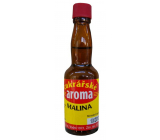 Aroma Raspberry Alcohol Flavoring for Pastries, Beverages, Ice Cream, and Confectionery Products 20 ml1.14 EUR
Aroma Raspberry Alcohol Flavoring for Pastries, Beverages, Ice Cream, and Confectionery Products 20 ml1.14 EUR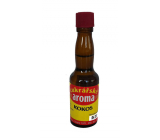 Aroma Coconut Alcohol Flavoring for Pastries, Beverages, Ice Cream, and Confectionery Products 20 ml1.14 EUR
Aroma Coconut Alcohol Flavoring for Pastries, Beverages, Ice Cream, and Confectionery Products 20 ml1.14 EUR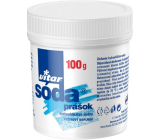 Vitar Soda powder for heartburn, stomach pressure and feeling of fullness food supplement 100 g2.49 EUR
Vitar Soda powder for heartburn, stomach pressure and feeling of fullness food supplement 100 g2.49 EUR